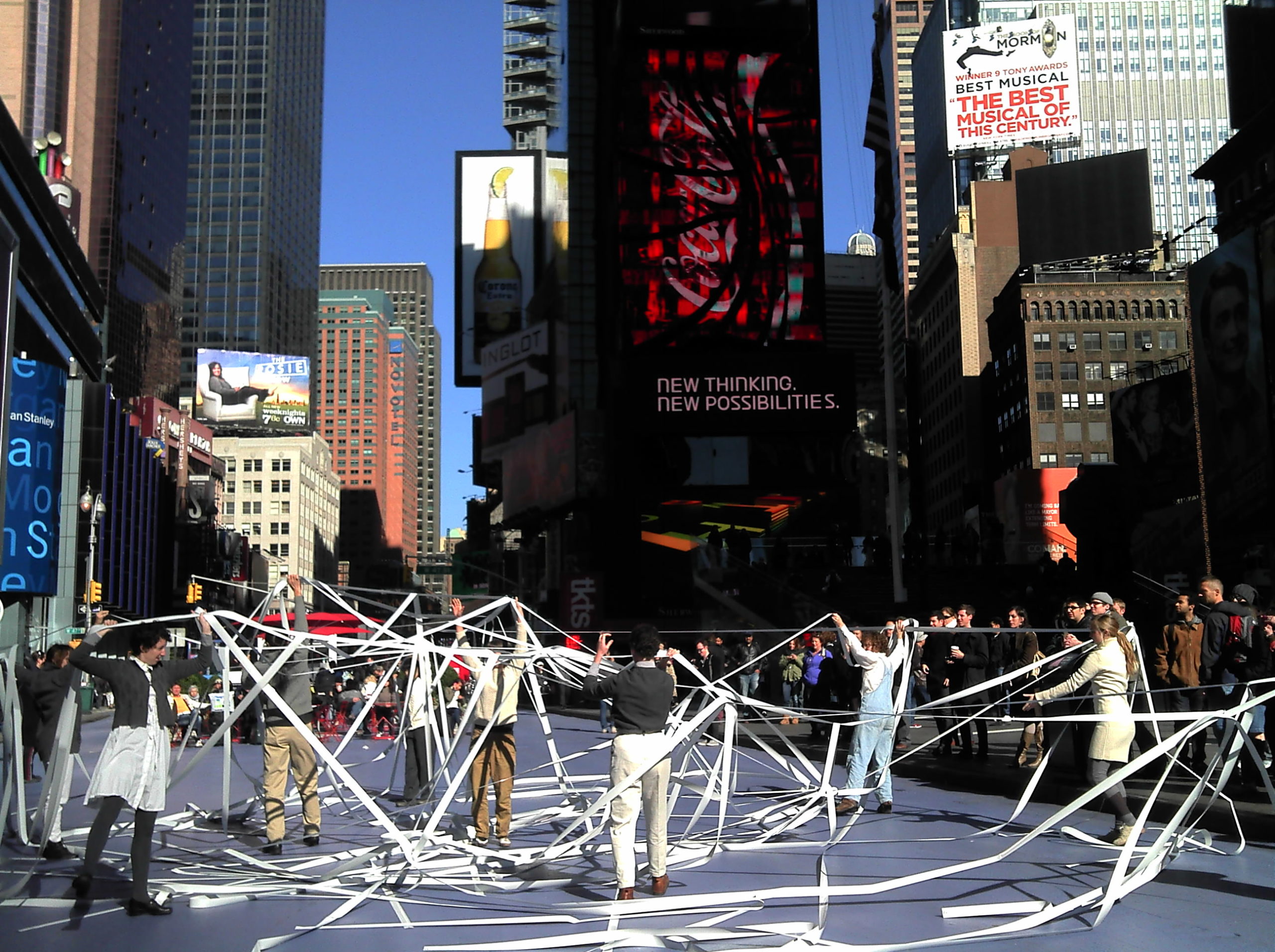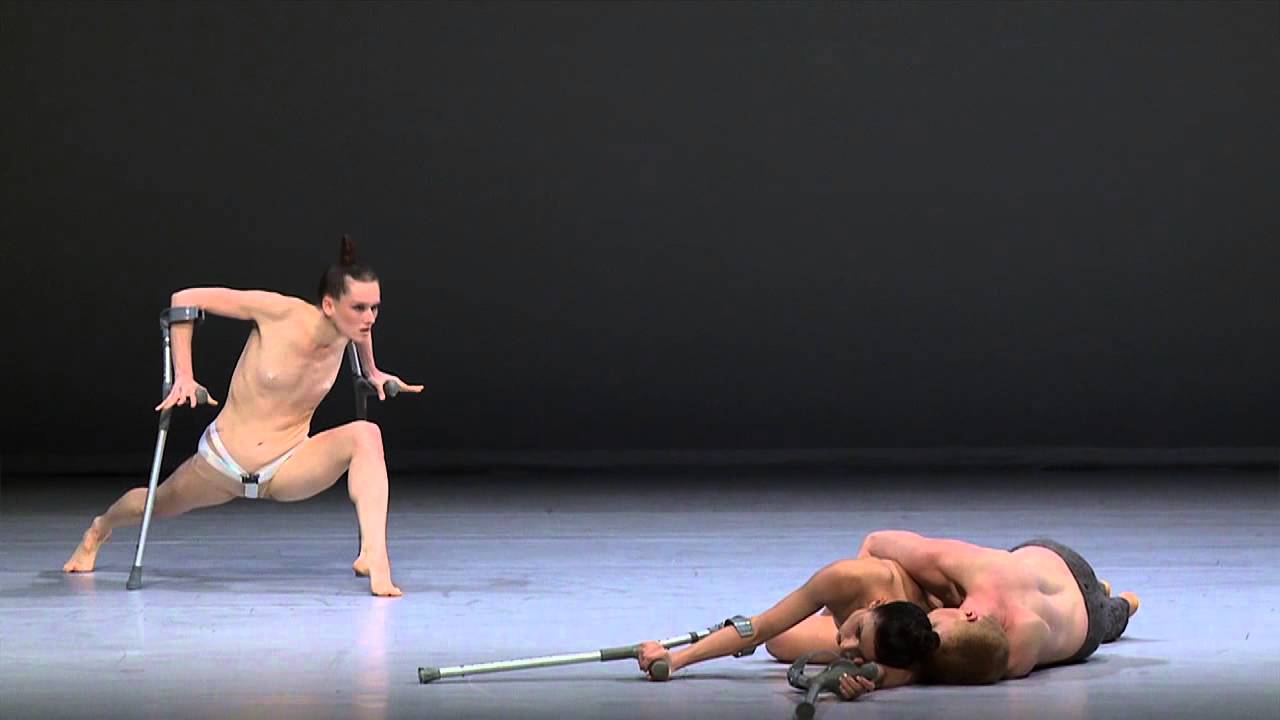Looking for Workers with “Soft Skills”? Hire Dancers
Many university degrees prepare young people for technical tasks but overlook some of the important interpersonal skills needed within the working environment. Yet, for those who have spent their lives engaging in the work of dance, the necessity of these skills is perfectly obvious — no dance work could be made without them

Education is often credited as the sole necessity for a more secure and prosperous life. As a child of the ’80s, my parents said to me: go to college, take out student loans, and you’ll do fine. Study what you like, just work hard and leave with a degree, doesn’t matter what sort.
So, I chose dance.
But, in fact, these days, even the most successful contemporary dancers have day jobs or supplemental income. The luckiest might have prestigious positions in academia or arts administration; some have studied further in related arenas of somatics or therapy. The rest of us likely hustle within the gig economy, performing work often technically unrelated to dance. Dancers know to tread carefully when mentioning their art, as it is not always an easy topic for those less familiar. Divulging about Liz Lerman or Marie Chouinard might well alienate rather than interest people you meet, and the unfortunate situation of discussing one’s flexibility with the dentist or a bank teller is not worth the risk. In more personal social situations, such a choice of study can be neatly packed away as youthful indiscretion, any awkwardness dissolved with a bit of self deprecation, then on to smoother conversation. Given that, hiding mention of a BFA in dance when applying for needed work is understandable, though quite a bit more unfortunate, especially when citing education or certain gained abilities that might elevate one’s chances for better days ahead.
And yet, lately, I have noticed similar speeches out of the mouths of non-dance majors. I’ve heard them scoffing dismissively at their own worthless education and lack of opportunities for supportive work. This, from students who did not roll on the ground during class and wear sweatpants; this, from students whose choice of study fashions them as capable and bookish, potential leaders in the job market.
We, as a society, are seeing previously terminal degrees opening up to further ranges of higher education, rendering those previous degrees lesser achievements. One can receive a PhD in visual art now, though no assurance of a career is earned, and Dr. Art will still need to compete with talented outsider artists. We are seeing more college graduates than there are positions available. An article in Forbes Magazine by Chris Bowyer discusses how a higher education does not open the frame of job possibilities but only shifts the frame upward, so “some higher-paid positions become feasible, but some lower-paid ones suddenly aren’t, either because the graduate refuses to take a job below their education level, or (more commonly) because the extra student loans make it financially difficult to do so.” As technological advancements race forward, tech jobs have become the educational carrot to chase. New and expensive certification programs appear, often required by employers and for very low-paying positions that have historically been entry-level jobs. This push for further credentials creates a new barrier to work for positions that are often difficult but not glamorous, and which are probably unethical for employers to leave understaffed. For example, more and more assisted-living communities are requiring their residents’ assistants to be Certified Nursing Assistants. Vulnerable adults certainly need and deserve knowledgeable and conscientious assistance, but many of the technical skills needed are the same as those required by any good caregiver; maybe, in such cases, candidates with thoughtfulness, patience, creativity, and empathy should take precedence over those who can purchase extra coursework.

The cost of college has reportedly risen at rates 6-7% more than average inflation rates for decades, and the increases are largely unexplained. Post-secondary education looks suspiciously profit-driven on many levels; average student debt is at an impossible high. What’s more, a four-year degree is no longer a path into the middle-class. Undergraduate degrees, perhaps especially liberal arts degrees, have become void of professional purpose. The playing field has been effectively leveled, leaving people with varied backgrounds and stations of education competing for all the same jobs. With the currency of liberal arts degrees dwindling across the board, a bachelor’s degree in dance is an underdog no more.
Dancers are undoubtedly capable of making sense of things that are abstract and intangible, and “abstract and intangible” may very well be the direction that many businesses are headed.
But maybe this economy is ready for a dancer’s day in the sun. Dancers are undoubtedly capable of making sense of things that are abstract and intangible, and “abstract and intangible” may very well be the direction that many businesses are headed. The earliest human communication and language derived from movement and gesture. Dance is hardwired into our bodies; it is a fundamental to human expression and culture. A popular job orientation statistic posits that 55% of what we understand from communication is derived from the body language, 38% is from the way it is said, and only 7% from what is actually said.
Forbes and NPR’s Marketplace have lately been reporting on defects in undergraduate education, often suggesting the missing element to be “soft skills,” a buzzphrase bundling people skills, emotional intelligence, and other skills less easily measured or systematized. It seems that many university degrees prepare young people for technical tasks and to understand money-making strategies both new and old, but are distinctly overlooking some of the important interpersonal skills needed within the working environment. Yet, for those who have spent their lives (or the less prosperous half of their lives anyway) engaging in the work of dance, the necessity of these skills is perfectly obvious — no dance work could be made without them. A BFA in dance is synonymous with a BFA in soft skills.
So, for all the employers out there who might see these qualities lacking in their staff, and who may find themselves holding a resume that states dance experience, I’d like to highlight a few of the many artists who exemplify this exceptional mix of abilities peculiar to dancers — when hiring, please note. (Skills, both soft and hard, are itemized in parenthesis):
Tere O’Connor is a true poet of the dance world. He is a maker of beautiful dance compositions and remarkable for his visual and physical communications; but his graceful way of expressing has poured over into the written realm as well. Search for Tere online, and you find ample examples of his luxurious and vivid writing. In fact, any dance maker is required to draft compelling text descriptions for publicity and grant writing, and for the sake of translating ephemeral and abstract concepts to those more comfortable with a verbal world.
(Verbal communication, Writing, Inspiring, Storytelling, Humor, Technical Literacy)
Sculptor Liz Glynn presented a work during Perfoma 11 that re-envisioned success and failure for Buckminster Fuller’s experimental 1948 building of the geodesic dome. His attempt was certainly triumphant in terms of the energy, spatial understanding, and mastered choreography with which Fuller’s students carried out the process of assembly, though the materials used lacked a certain strength and tensegrity. Glynn’s work, in two parts, intended to remount and reframe the particular highs and lows of this historic construction. Part one meant to underline the grace of these original builders. Glynn cleverly contracted dancer and choreographer Laurel Atwell for the job, who then collected a group of dancers to silently, systematically, efficiently perform the building of the dome. A beautiful execution, though the dome was still unsound as the original and failed materials were once again put to use.
The second part of the work utilized sturdy supplies that produced a standing dome, the complication this time being that the pedestrian builders, chosen impromptu from the crowd, understandably faltered with the difficult collaborative task. Discussing this work, Laurel Atwell noted the facility dancers have with understanding the modalities of both interaction and form at work in the world, saying: “Dancers can have the virtuosity and physical prowess to express the most grand and inhuman physical feats or to embrace and understand minutiae, including the many different ways to pick up a pen.”
(Collaboration, Team Building, Teamwork, Strategic Planning, Spacial Awareness, Design Sense, Problem Solving)
Holo Lue Choy offered a performance in July at Minneapolis’ Fresh Oysters space that represented the artist’s undeniable and innate sense of empathy. The work loosely and poetically supposed a narrative of helping a stranger out of a vulnerable situation and toward potential comfort. It’s important to remember that dance content exists separately from the truth of the performer’s life, but it still seems quite fair to say, based on the evidence of such work, that Holo’s emotional intelligence is keen.
(Empathy, Emotional Intelligence, Motivation, Support, Quick Wittedness, Self Awareness)
This adroitness continues in less presentational settings as well. Dancers know the brass tacks; finding two or three hours, two or three times a week to bring groups together for rehearsal, even when those performers all have various nontraditional work calendars, and families, and friends, etc., not to mention the two or three other choreographers that are scheduling their time similarly, plus finding a space to rehearse that is available at the right time. (Scheduling, Facilitation, Time Management) Dancers are the people who woke up in time to go to ballet class throughout their teens and 20s. (Strong Work Ethic) And dancers can stomach working a scene where months of work may appear and disappear in the blink of an eye, while their bills come due, regular as rain. (Adaptability, Resilience) They can, but maybe, if more employers recognize their value in the workplace, they don’t have to.